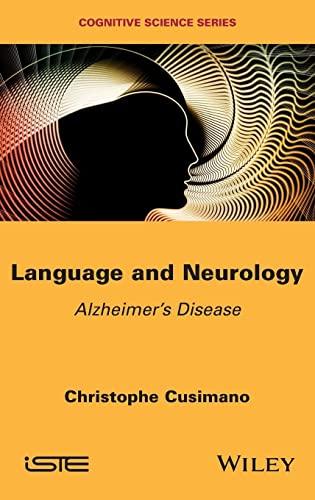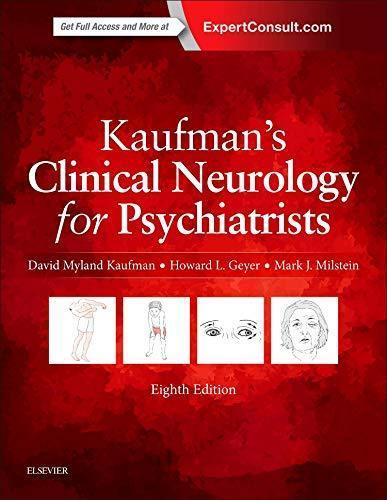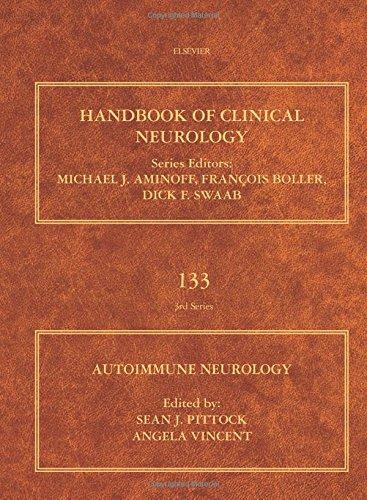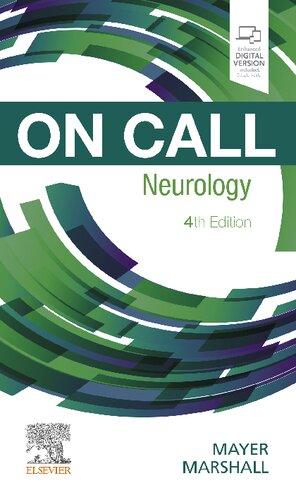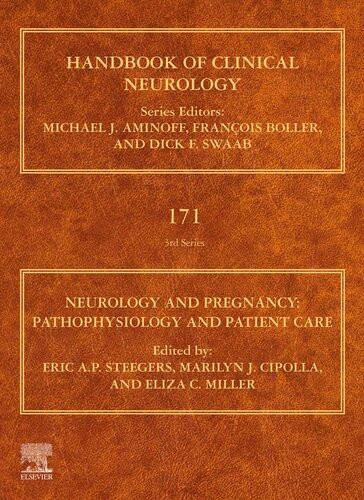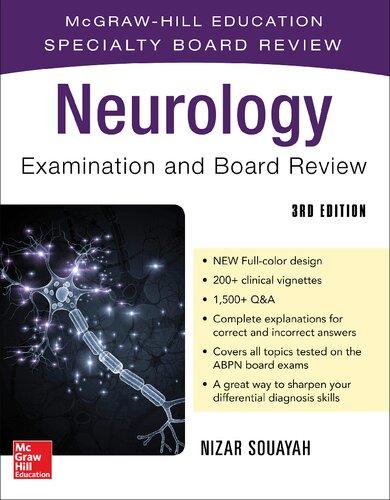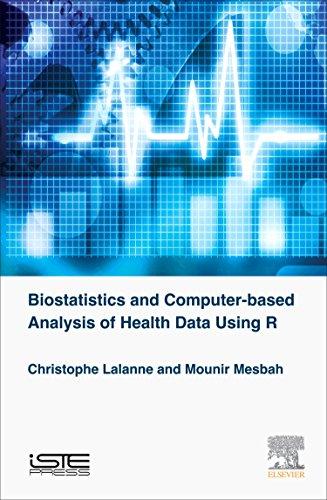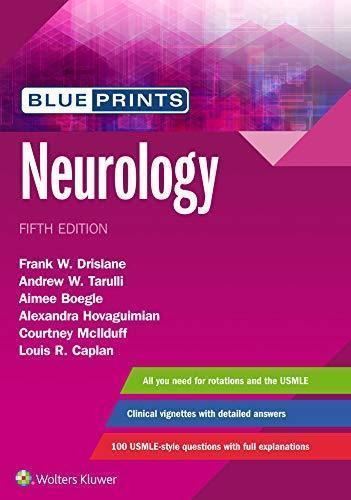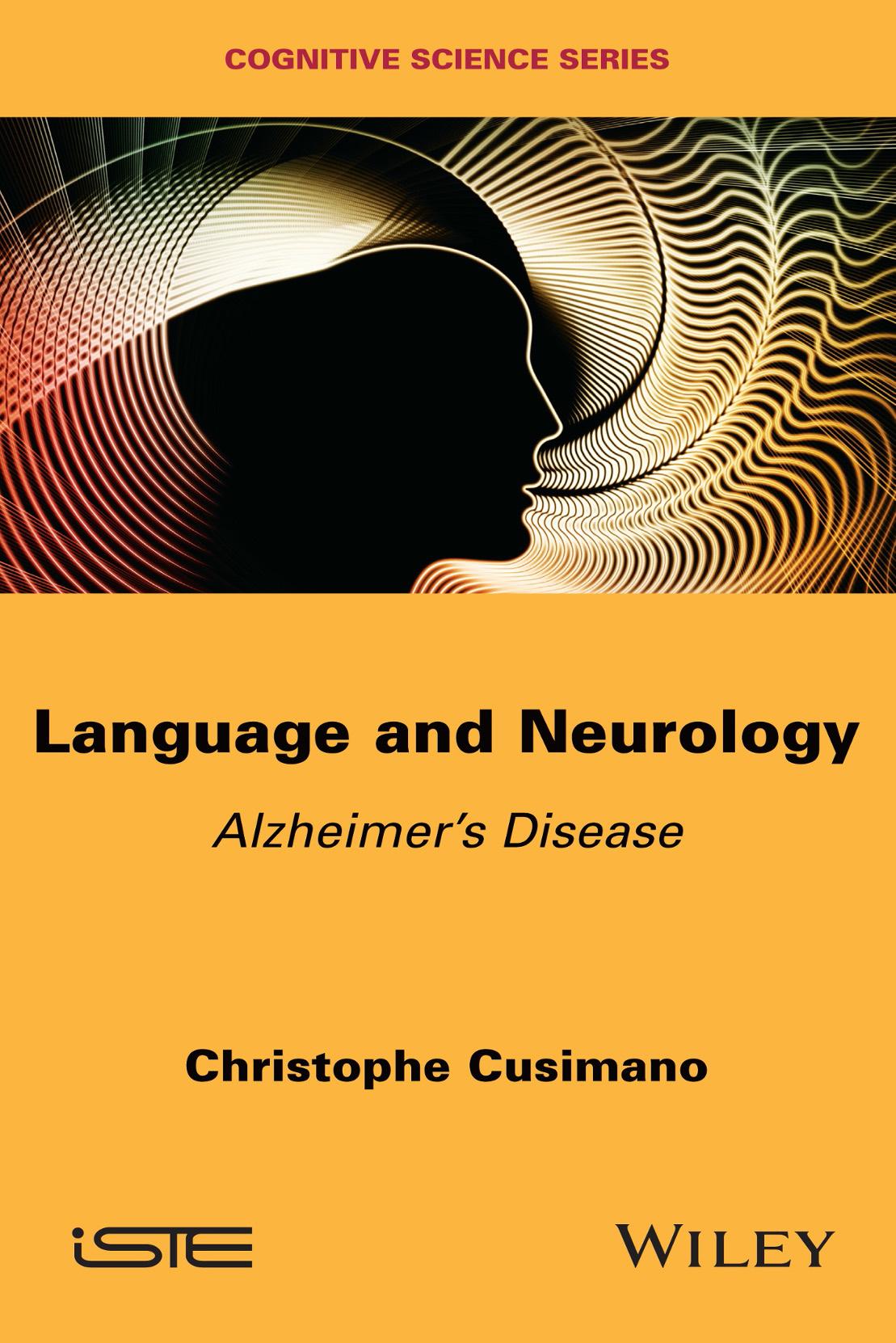Language and Neurology Christophe Cusimano
Visit to download the full and correct content document: https://ebookmass.com/product/language-and-neurology-christophe-cusimano/
More products digital (pdf, epub, mobi) instant download maybe you interests ...
Kaufman’s Clinical Neurology for Psychiatrists (Major Problems in Neurology)
https://ebookmass.com/product/kaufmans-clinical-neurology-forpsychiatrists-major-problems-in-neurology/
Medicinal Plants in Asia and Pacific for Parasitic Infections Christophe Wiart
https://ebookmass.com/product/medicinal-plants-in-asia-andpacific-for-parasitic-infections-christophe-wiart/
Autoimmune Neurology 1st Edition Sean J. Pittock And Angela Vincent (Eds.)
https://ebookmass.com/product/autoimmune-neurology-1st-editionsean-j-pittock-and-angela-vincent-eds/
On Call Neurology 4th Edition Stephen A. Mayer
https://ebookmass.com/product/on-call-neurology-4th-editionstephen-a-mayer/
Pan-Islamic Connections : Transnational Networks between South Asia and the Gulf Christophe Jaffrelot
https://ebookmass.com/product/pan-islamic-connectionstransnational-networks-between-south-asia-and-the-gulfchristophe-jaffrelot/
Neurology and Pregnancy: Pathophysiology and Patient Care Eric A.P. Steegers
https://ebookmass.com/product/neurology-and-pregnancypathophysiology-and-patient-care-eric-a-p-steegers/
Neurology Examination and Board Review, 3rd Edition Nizar Souayah
https://ebookmass.com/product/neurology-examination-and-boardreview-3rd-edition-nizar-souayah/
Biostatistics and Computer-based Analysis of Health Data using R 1st Edition Christophe Lalanne
https://ebookmass.com/product/biostatistics-and-computer-basedanalysis-of-health-data-using-r-1st-edition-christophe-lalanne/
Blueprints Neurology (Blueprints Series) Fifth Edition
https://ebookmass.com/product/blueprints-neurology-blueprintsseries-fifth-edition/
Language and Neurology
Series
Editor
Patrice Bellot
Language and Neurology
Alzheimer’s Disease
Christophe Cusimano
First published 2021 in Great Britain and the United States by ISTE Ltd and John Wiley & Sons, Inc.
Apart from any fair dealing for the purposes of research or private study, or criticism or review, as permitted under the Copyright, Designs and Patents Act 1988, this publication may only be reproduced, stored or transmitted, in any form or by any means, with the prior permission in writing of the publishers, or in the case of reprographic reproduction in accordance with the terms and licenses issued by the CLA. Enquiries concerning reproduction outside these terms should be sent to the publishers at the undermentioned address:
ISTE Ltd
John Wiley & Sons, Inc.
27-37 St George’s Road 111 River Street London SW19 4EU Hoboken, NJ 07030 UK USA
www.iste.co.uk
www.wiley.com
© ISTE Ltd 2021
The rights of Christophe Cusimano to be identified as the author of this work have been asserted by him in accordance with the Copyright, Designs and Patents Act 1988.
Library of Congress Control Number: 2020946491
British Library Cataloguing-in-Publication Data
A CIP record for this book is available from the British Library ISBN 978-1-78630-662-3
3.5.
3.7. Tests and context(s)
3.8. Absence of a cultural dimension in cognitive testing
3.8.1. First-generation North African patients in
3.8.2. Erasure of Czech/Slovak cultural
3.8.3.
3.9.
4.1.
4.3. Analyzing patient discourse: perspectives
4.3.1. Recursion, circularity and sequences: finding meaning through
4.3.2.
4.3.3.
Acknowledgments
First and foremost, I would like to thank my family for their patience and forbearance, subject as they are to the vagaries of an academic’s schedule. To my wife, who has learned to live with my own particular brand of organized chaos, and to my three wonderful children who have given up asking what exactly I do at work.
Warmest thanks to François Rastier for his valuable advice, both in relation to this book and elsewhere, and to Patrice Bellot, director of the Cognitive Science collection at ISTE, for his encouragement and support over the course of this project.
Thanks go to all of the patients who allowed me to sit in on their consultations, and also – especially – to all of the neuropsychologists and speech therapists, too numerous to name, who kindly allowed me to observe their work. This book would not have been possible without their willing participation and valuable insights.
Finally, I wish to thank my fantastic students at Masaryk University in Brno, Czech Republic, who never cease to inspire and motivate me to give my best every semester; my colleagues in the Romanistics department, for their unfailing kindness; and all of my other colleagues and friends at Masaryk.
Application of Linguistics to Cognitive Tests and Speech Patterns in Alzheimer’s
Patients
I seemed to be upon the verge of comprehension without power to comprehend – men, at times, find themselves upon the brink of remembrance without being able, in the end, to remember.
Edgar Allan Poe
The Murders in the Rue Morgue, 1841
Despite playing a major role in laying the theoretical foundations for many of the humanities and social sciences, interest in linguistics has waned over the last 20 years. The decline of structuralism, coupled with the rise of both cognitive sciences and communications theory, means that the subject is increasingly limited to strictly academic circles; even in this restricted context, it can be hard to convince funding bodies of the utility – that allimportant, overriding criterion – of linguistics projects. It would be wise to note the significant role played by linguistics in the fields of natural language processing (e.g. in search engine development, automatic translation, etc.) and in foreign language teaching, where it plays a supporting, but no less essential, role.
In this book, we have chosen to focus on a field of application in which linguistics plays a supporting role, providing theoretical insights into a domain of expertise. The application of linguistics to the field of medicine is
Language and Neurology
relatively novel, and not without its risks; success is not guaranteed. Jakobson highlighted this issue in his 1963 conference presentation on aphasia (1969, p. 133): “I make no claim to expertise in pure linguistics, psychology or medicine; as such, my comments will be limited to linguistic observations of linguistic facts, and no more”. Similarly, in this book, we have chosen to focus on two aspects:
1) The detection of Alzheimer-type dementia (and, consequently, of certain related conditions) using cognitive testing. We will not go into any detail concerning other methods of investigation, whether of the phenomenological type (perception through oral questioning or questionnaires) or of the strictly experimental type. Instead of the head-on approach used by neuropsychologists, speech therapists and geriatric specialists, we have chosen to view the problem from a different angle, focusing on providing support for diagnosis. We shall concentrate on one simple question, asking whether or not language-based cognitive tests are well-designed in linguistic terms, and whether they provide sufficient information. We ask whether these tests are supported by findings from the field of linguistics, particularly with regard to textual semantics. Evidently, even if this is not the case, it is not our intention to pass judgment on the practices of healthcare professionals.
2) An investigation of the linguistic characteristics of speech in patients suffering from Alzheimer’s disease. This more “conventional” study aims to provide a thorough inventory of traces of amnesic troubles in patient speech, and of the strategies used by sufferers to work around these problems.
This book follows a relatively predictable plan, beginning with a review of the limited number of existing studies which consider various pathologies from a linguistic perspective. Next, we shall give an overview of the linguistic symptoms of Alzheimer’s disease, touching briefly on other related conditions. Chapter 3, which forms the basis for the rest of our work, consists of a detailed examination of diagnostic tests, beginning with general tests before moving onto those which focus more specifically on speech in the context of memory-related pathologies. The majority of our critical remarks, along with suggestions for improvements, are found in this section. We highlight a number of promising new pathways, while giving further consideration to certain ideas which have only briefly been touched upon in the literature and which, in our view, merit further investigation.
For instance, the textual dimension of information encoding produces a large volume of recall cues, but is systematically excluded from test procedures in favor of a less “ecological”, more symptomatic and more “evocative” approach. Similarly, cultural differences are generally ignored and left open to interpretation by the practitioner. Our intention is to carry out a more in-depth investigation of these possible pathways, although we make no pretense to verify these hypotheses in practice or produce new tests as a function of our findings. Chapter 4 of this book concerns recent developments in the domain of patient speech, touching on the notions of corpus linguistics and on the studies of interviews carried out with Alzheimer’s patients in a clinical context. This chapter includes several extracts from interviews which we carried out: in these transcripts, we attempt to identify characteristic features of patient speech, relating to syntax, semantics or other areas. Due to our own professional background, we focus on this latter consideration, particularly in terms of confabulation analysis.
This book contains the critical reflections of a linguist concerning a field of application which, at first glance, lies far outside his area of expertise. In presenting these observations, we aim to stimulate reflection and debate on the subject, with the aim of improving the lot of patients. Our experience of working alongside neuropsychologists and speech therapists has led us to believe that such progress is eminently possible. Evidently, the ultimate goal of our work is to contribute to the improvement of diagnostic tests, using findings from linguistics to fine-tune practical approaches. Furthermore, we hope that our speech analyses will help caregivers to better support and better understand patients, improving communication. This work may be of interest to non-specialist readers who have encountered cognitive testing procedures in the past (e.g. friends and relatives of dementia patients) or who simply wish to know more about specific characteristics of the speech of Alzheimer’s sufferers; to this end, we have chosen to write in a very direct style with as little jargon as possible. As we shall see, this book makes no claim to exhaustivity, and our analyses may lay the foundation for future work, finally responding to the decades-old call issued by Hatfield (1972): “Looking for help from linguistics”.
Conversation transcription conventions
Evidently, our purpose in writing this book is not simply to provide a collection of patient speech extracts for researchers working on interaction and conversation analysis. As such, we have chosen to prioritize readability for non-specialists, using minimal transcription conventions based on Jefferson’s grid (2004), as used by Asp and De Villiers (2010, p. vi).
C Caregiver
P Patient
S Sufferer
NP Neuropsychologist
ST Speech therapist
(1) Line 1
(10) Line 10
( ) Audible but unclear
(( )) Clarification or description, e.g. ((laughs))
# Short pause in a speech turn
## Longer pause in a speech turn
// // Breath group, i.e. group of words pronounced by the speaker without stopping for breath, ending with a pause
xxx Inaudible
^ Short silence between two speech turns
^^ Longer silence between two speech turns
Table I.1. Conversation transcription conventions
1
Linguistics, Language Pathologies and Alzheimer’s Disease: A Brief History
As we noted in the introduction, very few linguists have studied language pathologies in a medical context; the development of specialized linguistic theories with practical applications in this area has seemingly been perceived as overly challenging. This does not mean that theories developed in unrelated contexts – for example, in our own field of interpretative semantics or speech analysis – may not be used to cast light on these issues; however, it reinforces the general perception of a persistent lack of research in this area.
It is thus the history of the domain itself, and not simply our summary of this history, which is “brief”. The lack of interest in this area on the part of linguists has left the field wide open for a series of postulates, mostly derived from the field of neuroscience, to take root; we shall discuss these postulates in greater detail later.
For the moment, we shall focus our discussion on the theory of mediation, the only linguistic theory focusing on language pathologies; we shall then turn our attention to other theories which have been used in attempting to describe or explain these pathologies. Language and Neurology: Alzheimer’s Disease, First Edition. Christophe Cusimano
1.1. Gagnepain’s theory of mediation: an approach to pathological speech on its own terms
Few linguistic theories have addressed the issue of language disorders. One of the most incendiary and original theories in this select group is Jean Gagnepain’s theory of mediation. This theory is, inexplicably, not well known among linguists; however, its wide applicability has inspired many researchers and supporters from across the field of social sciences. The theory has its roots in a meeting between Gagnepain and Sabouraud, a neuropsychiatrist, following the former’s installation as professor of “pure” linguistics at Rennes in 1956. At this early date, there was nothing to suggest that Gagnepain – whose thesis concerned Celtic syntactics – would direct his attentions to pathologies. This change in direction was to his advantage: the author is not particularly well known for his earlier work1, but for his proposed “deconstruction” of language, which reverses the usual logic whereby we define a norm, then describe deviations from this norm. On the contrary, Gagnepain and Sabouraud considered language pathologies as a type of reagent, revealing the true, underlying mechanisms of language; each pathology highlights, in some way, processes which are not visible when everything is functioning “correctly” (Gagnepain 2006, p. 54)2:
“We consider the mental patient as a teacher of linguistics: he or she teaches us how language works. Insofar as its operation is not haphazard, we attempt, from the patient’s behavior, to induce the grammatical rules which govern the construction of their messages”3.
1 Gagnepain himself, later in his career (February–March 1993) (Gagnepain 2016, p. 18) clearly recognized the true value of his background in linguistics: “I mention this approach to linguistics now to avoid having to speak of it later; I believe that if one wishes to study the humanities and social sciences, one must rid oneself of all these old clichés which either establish divisions between man and “natural” objects, or attempt to ‘naturalize’ man”.
2 Author’s note: many of the quotations of this book have been translated from the original French. For reasons of clarity, the original text will not be given; interested readers may wish to consult the bibliography.
3 Note that this idea was not entirely original; the role of exceptions in illustrating the operation of a system is well known. As regards the brain, the great science-fiction writer Asimov, in a short story (Stranger in Paradise, 1974), wrote, of an autistic character: “Randall, subjected for increasing lengths of time to artificial stimuli, yielded up the inner workings of his brain and gave clues thereby to the inner workings of all brains, those that were called normal as well as those like his own”.
Before going into detail concerning this theory and its main contributions, it is interesting to note that the dominance of structuralism in recent decades has resulted in the marginalization of certain “fringe” theories in spite of their clear structuralist slant, such as Tesnière’s structural syntax. The same can be said of the theory of mediation, situated by its authors along these lines (Tesnière 1963, p. 86), as we clearly see from the conclusion to their remarkable study of aphasia:
“Using structural linguistics, we have attempted to define the principal illustrations provided by the study of aphasic patients”.
The theory of mediation (TDM, from the French théorie de la médiation) posits that human beings exercise a form of “mediation” in their relations with the world. Gagnepain defines this as “the intrusion, into the immediate of an element which cannot be immediately understood, of a mediate, whether in the structure, in praxis, or on an implicit level” (Gagnepain 2016, p. 31). In this quotation, we see that the author refuses to assimilate reason to language alone; we also detect the “essence” of the TDM itself, in the division of human capacities into a series of planes, or levels. The TDM is systematically referred to as a theory of deconstruction, by Gagnepain himself and by subsequent commentators. This deconstruction is rendered necessary by the number and variety of disorders observed in patients, and operates on four different planes, not just the capacity of speech; Gagnepain sweepingly asserted that all previous authors – including Saussure – had limited their reflection to this more simplistic approach:
“We have made a clear break with those who have gone before us in refusing to reduce rationality to a single mode. While most thinkers have restricted reason to its verbal form alone, following the Greek tradition of the logos, we have established four rational modes”.
According to Gagnepain, these four planes are not a priori objects, but rather products, based on observations. Working closely with Sabouraud, Gagnepain gained access to a large group of aphasic patients (the subjects of the authors’ earliest analyses), along with dyslexic, dysgraphic, dyspraxic and even schizophrenic patients, straddling the line between neurology and psychiatry with ease. This approach to pathologies as a whole is the reason TDM is also referred to as a “clinical anthropology”.
The difficulties and inabilities of each type of patient highlight different capacities. Mjachký (2016, p. 29), author of a thesis on determinants which was based, in part, on the theory of mediation, calls attention to both the independence of planes (enabling understanding of phenomena) and the unity resulting from their presence, to a greater or lesser extent, in all subjects:
“These modalities, which Gagnepain refers to as ‘planes’, are ‘language’, the aforementioned faculty of representation; the ‘tool’, which is the faculty of fabrication; the ‘person’, which is the faculty of the social being; and the ‘norm’, which is the faculty of ethical analysis. The value of this model lies, amongst other aspects, in the fact that each of these autonomous rationales is viewed analogically, i.e. that man, whilst a pluridimensional being – deconstructed, in a certain way –remains one, precisely in light of the identity of construction of each dimension (plane)”.
The four planes identified by Gagnepain and Sabouraud, in their own terms, are: language (plane I, giving rise to the science in question here, glossology); tools (plane II, the subject of ergology); the person (plane III: sociology, and to some extent politics and even legislation) and norms (plane IV, relating to ethics). In this case, Gagnepain showed a rare degree of humility in noting that, as these four planes were identified through observations, his list was not necessarily exhaustive.
Just as the TDM is broken down into four planes, glossology itself can be broken down, in the context of pathology studies, into four levels. These do not correspond in any way to the conventional division of domains within the language sciences; Gagnepain’s aim was for these four levels to correspond, analogically, to the four higher levels. In this sense, the term “sub-levels” is not entirely appropriate, as we shall see. This difficulty is clearly explained by Jean-Quentel and Beaud (2006, p. 39):
“We have thus ‘deconstructed’ language into four registers which correspond to the four planes of the theory of mediation: grammaticality, writing, word usage and speech. Only one of these four registers, grammaticality, specifically concerns
language. The other three registers result from the action of external processes of a different order on language. Writing is, at the end of the day, a technical matter; word usage relates to a social dimension, and speech involves an ethical process”.
The analogy between the divisions at the higher level and those identified within the language register is remarkably original, practical and, according to the author, applicable to a range of pathologies. This double deconstruction is summarized in the diagram below (according to our interpretation: neither Gagnepain nor any of his followers have used this representation).
Figure 1.1. The four planes of the theory of mediation and the four registers of language
Quentel and Beaud’s illustration of language deconstruction does not specifically touch on pathologies, but is centered on a convincing discussion of language acquisition in children. In a succinct discussion, the authors present at least one disorder associated with each dimension. Quentel and Beaud present dysphasia as a disorder relating to grammaticality, and dyslexia as a disorder relating to reading. Disorders connected with word usage are harder to identify clearly, corresponding to infantile psychoses which act on the child’s capacity to interact with others but do not affect grammaticality. Finally, communication disorders, or the lack of desire to communicate, relate to the speech register.
Gagnepain and Sabouraud began by testing their hypotheses in the context of aphasia, notably confirming, in practice, Saussure’s theory of the biaxiality between paradigm and syntagm. Patients with Wernicke-type aphasia were shown to be unable to complete identification, recognition or choice tasks on both the signifier and signified levels. Patients suffering from Broca’s aphasia were unable to segment speech chains in any appropriate way
(neither phonemes nor lexical units). Once again, this disorder concerns both the signifier and signified levels. However, Wernicke-type aphasia clearly involves a disorder on the paradigmatic operation level (or the “taxonomic” level, according to Gagnepain 2016, p. 61): “Patients with Wernicke’s aphasia have lost the capacity to choose, but retain the ability to segment text; everything in their lexicon is confused”. Broca-type aphasia patients cannot carry out syntagm segmentation (Gagnepain’s “generative” level, 2016, p. 62): “Patients with Broca’s aphasia, who are unable to combine and who cannot add one and one, tend to make more precise choices”. These examples both concern language production, but these disorders may also be observed in language reception.
As we have just seen, aphasia sufferers may be grouped according to their relation to biaxiality; they may also be categorized according to the signifier/signified duality: “one finding of aphasiology concerns the ‘breaking up’ of signs: some patients possess the capacity for phonological analysis alone, without semiological analysis, or vice-versa” (Gagnepain 2016, pp. 55–56). The author refers to phonological Wernicke’s or Broca’s aphasia when the capacity for phonological analysis is deficient, and to semiological Wernicke’s or Broca’s aphasia when the capacity for semiological analysis is lacking. In this way, Gagnepain defines four different types. We shall not go into any detail concerning Gagnepain’s studies of aphasia here; interested readers may wish to consult the works cited in the bibliography.
Gagnepain only briefly touches on Alzheimer’s disease, perhaps due to a lack of personal interest, or to the period in which he was working (1970s–1990s), when the contours of the disease were only just becoming clear. He mentioned the disease only in the context of a discussion of the way in which society regards the elderly. In his sixth “lesson”, Devenir ce que nous sommes (Becoming What We Are), the author considers elder care homes, offering up a reflection in which he questions the practice of placing seniors in these establishments, noting that the idea of the “senile senior” is a very recent development: “in the past, the old person was still the master of the house; elders were respected as such, even if they had lost their faculties” (Gagnepain 2016, p. 207). Further on, Gagnepain noted that “in the majority of civilizations, before our society ‘medicalized’ old age, the elder was precisely the one who could not die, was ageless”. Our Western societies have an increasing tendency to marginalize the elderly. Coming from a
different angle – that of pure psychiatry, or, to use the author’s own term, “psychogeriatrics” – Ploton (2004, p. 81) made a very similar remark:
“In seeking a definition of old age, based on observations, we note, at a more or less advanced stage, the presence of a ‘tipping point’ where a person enters into a different relational space, one which is almost sacred. Whatever the reason for this phenomenon (objective or subjective), those concerned are no longer approached as equals”.
The elderly person is one who, being closest to death, comes to represent death among the living: it “enters into history as a living thing”, according to Ploton (2004), who also clearly opposes this representation.
Gagnepain subsequently develops two highly relevant ideas. The first is an analogy between childhood and old age, used at various points later in this book:
“I believe that we should consider the second childhood, i.e. senility, in the same way we regard childhood. Just as, in a normal child, there is no ‘child’ – the adult is already present –in a normal elderly person, there is no ‘elderly’, only the eternal”.
A healthy child, who already possesses all of his or her faculties on all planes, is, in a way, already adult, and in terms of the anti-psychogenetic logic of the TDM, it is not helpful to see a normal adult or elderly person as anything other than a child who has “become”. That said, it is important to distinguish between senility and deterioration resulting from a cerebral lesion, for example. The “normal” elderly person, according to Gagnepain, has not been subject to any change, as a person; in the case of lesions or disease, however, the “person” may have disappeared while the subject remains present. Following this reasoning to its logical conclusion, the author considers that there is no reason to speak of “pediatrics”, “geriatrics”, etc. On this point, it is doubtful whether Ploton would agree with Gagnepain, as the passage from childhood to adolescence clearly marks the entry into a new phase of life; in this way, it is different from the aging process. Pancrazi-Boyer (1997, p. 50) notes:
“More generally speaking, we have seen that senescence, like adolescence, represents a period of existential crisis, involving a rebalancing of objectual and narcissic investments. The difference between the two is that with senescence, there is no perspective of ‘growing up’ at the end of the tunnel, but rather that of the end of the subject. The psychic life of the subject appears to be dependent on the way in which the anxiety connected with the perspective of death is managed”.
The author particularly highlights the rebalancing of topical investments (interest in stimuli from either interior or external sources) and libidinal investments. These two factors provide an explanation for both benign forgetfulness (as opposed to malign, or voluntary, “forgetting”) and for the occurrence of what Pancrazi-Boyer poetically refers to as éclipses de pensée, “thought eclipses” (1997, p. 51).
The second idea which is relevant for our purposes concerns the difficulty of precisely defining the notion of aging. Gagnepain argues that a “theory of aging” is required, as “aging is neither a scientific nor a medical concept”. This question is crucial. Although the text is no longer wholly relevant, and significant progress has been made toward establishing memory skill norms for each age range, many specialists – including Brouillet – consider that memory decline in aging patients is not inevitable and that there is a lack of empirical proof. We shall return to this point later.
The subject of Alzheimer’s disease is then mentioned, but almost immediately dismissed: “Few things are as poorly-defined as Alzheimer’s disease” (Gagnepain 2016, p. 210). Gagnepain introduces the subject by taking an opposite example, i.e. the rare cases where “the person outlives the subject”: certain victims of workplace or traffic accidents, suffering damage to the brain, are able to communicate normally despite having lost the capacity for spatial localization. In other terms, the social part of the individual survives but the biological element is altered. In the case of lesions or pathologies, it is more likely that the person (social being) will disappear while the biological subject4 remains present. The author’s model offers an interesting
4 Gagnepain (2016, p. 140) further clarified this novel distinction, which is essential to his work: “In other terms, above and beyond the being inherent in our nature, i.e. our biology, referred to somatically as the subject, we also possess the capacity to self-construct as a person, emerging as social beings […]”.
perspective on Alzheimer’s disease, which constitutes a gradual loss on the person plane (plane 3). Gagnepain (2016, p. 211) summarizes this as follows:
“[…] it seems probable that the disappearance of the person is conditioned by a progressive alteration of the cortex, which Alzheimer saw to some degree, but we cannot exactly pinpoint the location. The subject may appear to remain untouched even whilst the person is progressively receding. The patient appears to enter into a form of social sleep, increasingly isolating them from their milieu”.
In addition to positioning the disease on the personal plane and in terms of the subject dimension, this definition raises the question of the isolation into which the sufferer descends, little by little. Progressive cortical loss is seen to parallel the loss of the social person. In our speech analyses, we shall see how this theme returns again and again, and is accentuated by an awareness of this “social sleep”.
We have endeavored to provide a precise overview of the theory of mediation, which represents the only real attempt at understanding pathologies from a linguistic perspective. However, we shall not go into any greater depth concerning this theory in the rest of our work. We shall simply draw on a number of essential ideas which the theory highlights. First, the way in which deviation from the norm is measured, in terms of linguistic performance, is insufficient: we need to account for patient speech on its own terms, including all of the communication strategies developed by sufferers. The value of this approach is increasingly recognized. Recently, Devevey and Kunz (2013, p. 81), writing on the subject of dysphasic patient care, wrote:
“Our idea is to consider dysphasic children as thinking, speaking subjects whose variations in usage constitute an idiolect, rather than a language pathology”.
Gagnepain avoided this stumbling-block by simply refusing to label speakers who use language in a different way through a pre-established and fixed grid. His model does have its shortcomings, notably in terms of the limitations of the four planes, and the author’s comments can also be somewhat obscure; however, overall, Gagnepain’s approach is remarkably
coherent. The way in which the four planes are mirrored by four registers of language makes it possible to consider a range of different pathologies, justifying the application of the theory as a whole. By observing pathologies (notably aphasia), Gagnepain confirmed Saussure’s ideas concerning the bifaciality of linguistic signs and biaxiality, providing a strong argument in support of applicability. He also published work on a number of significant issues which are still fully relevant, such as the way in which Western society views old age (retirement, illnesses, cognitive diminishment) and, more generally, any form of deviation from the norm.
1.2. “Looking for help from linguistics”: other (rare) resources
Aphasia was the first subject addressed by the TDM and significantly impacted the way in which it was modeled. It is important to note that this condition is not so distant from Alzheimer’s disease; as Fraser et al. (2016, p. 408) note:
“Although memory impairment is the main symptom of AD [Alzheimer’s Disease], language impairment can be an important marker. Faber-Langendoen et al. […] found that 36% of mild AD patients and 100% of severe AD patients had aphasia, according to standard aphasia testing protocols”.
The fact that aphasia has been a preferred subject for testing other linguistic theories therefore has a logical basis; however, in each case, the authors have focused on finding illustrations to support theories and not the reverse, which makes a significant difference. Hatfield’s call for support (1972), “looking for help from linguistics”, received very few responses, precisely because of the difficulty inherent in moving from theory to practice. No linguistic model, with the exception of Gagnepain’s model described above, has taken pathological speech as its starting point or focused entirely on the subject. The following review is essentially an inventory of the rare attempts which have been made to consider pathologies from a linguistic standpoint.
Jakobson, for example, used aphasia to produce a helpful typological grid, described in detail in Langage enfantin et aphasie (Child Language and Aphasia) (Jakobson 1969). The title of this work relates to the similarities between language acquisition in children and the partial language loss
inherent in aphasia; however, there are nuances which must be taken into account. First, aphasia does not necessarily involve progressive regression, whereas acquisition clearly follows a regular development pattern. Second, the phonological system used by children should not be seen as the exact opposite of that observed in patients. In his preface, Jakobson (1969, p. 9) notes that the relevance of this analogy is limited to certain cases of aphasia:
“On closer examination, the language pathology presents a certain level of variation in terms of syndromes, compared to the essentially uniform process of child language initiation. Mirror symmetry between the construction and dismantling of the phonological system is only valid for some of the many and varied forms of aphasia”.
Jakobson’s linguistic classification of aphasia types was long considered to be authoritative in terms of the specifically linguistic aspect of the condition, and although recent discoveries have led to the introduction of certain nuances, it retains a degree of validity. Jakobson’s work intersects with Gagnepain’s efforts in several respects: for example, Broca’s aphasia is seen as a condition affecting encoding and continuity, meaning that sufferers lose the capacity for metonymy. Wernicke’s aphasia is seen to affect decoding and similarity, thus preventing the sufferer from reasoning through metaphor. Martin (1993, p. 10) summarized Jakobson’s observations as follows:
“Jakobson stressed the double operating mode of linguistic systems, with selection (the paradigmatic aspect) operating alongside combination (the syntagmatic aspect). In his view, all aphasic conditions can be defined as a function of these two modes. Similarity disorders affect selection and the choice of units on different levels. Contiguity disorders affect combination and concatenation operations. In aphasia sufferers, the bipolarity between the choice of units and sequential arrangement is eliminated, and only one axis remains operational”.
We thus see how, in a certain way, Jakobson was able to use his observations of aphasia in support of pre-established principles, essentially the double articulation between morphemes/phonemes and the opposition between phonetics (sounds, with no distinctive property) and phonology
(phonemes with distinctive properties). This may not have been Jakobson’s initial intention, given his clear interest for aphasia in particular, but the dominant theoretical orientation is clearly linguistic. Jakobson’s work could be seen as a foundation for collaborative work between linguists and neuropsychologists; however, it failed to trigger interest for this area among functional linguists, and no work of this nature – for example, on Alzheimer’s disease – was produced as a result.
Nevertheless, Jakobson fills an essential gap, making what we consider to be one of the major contributions to pathology studies by carrying out a contrastive linguistic study. From the outset, the author considered knowledge of languages and their various properties as a prerequisite for studying deviations and regressions in patients; throughout his work, Jakobson provided a number of examples of aphasic patients with different mother tongues.
For our purposes, we have chosen to present a single case which is particularly relevant, as it involves patients who speak Russian, Polish and Czech – three languages of the Slavic family. The heart of the problem relates to vowel length. In Czech, unlike Russian, the use of a short or long “a” sound can be a cause of ambiguities. These are rare when words are used in context, but feature heavily in Czech grammar textbooks. This means that insistence or emphasis cannot be marked by vowel length in Czech, while in Russian, emphasis is typically marked by lengthening vowels. Observation has shown that aphasia can affect this phonological feature in Czech: the patient in question adopted this particular feature of Russian speech. Jakobson stressed that, as each parameter forms part of a system, the loss of the distinctive vowel length characteristic necessarily has an impact on the patient’s speech as a whole. In Czech, the first syllable of a word is systematically stressed; the patient shifted stress onto the penultimate syllable, following an accentuation pattern which is standard in Polish, but is only used in Czech for emphasis. Jakobson (1969, p. 106–107) explains this reorganization of the prosodic system as follows:
“In practice, the expressive stress became the principal stress and took on a configurational role, as the loss of quantity led to a reinforcement of stress. Stress on the penultimate syllable generally appears more pronounced due to the contrast with both the previous and following syllables, which creates a twosided peak”.
The author goes on to explain that this case probably mirrors the prosodic evolution of certain Czech dialects and of Polish. As vowel quantity ceases to be distinctive, prosodic stress is modified. This is not surprising, as any modification to a phonological or morphological system will necessarily have an impact on prosody as a whole. In Old French, for example, the loss of noun cases resulted in the establishment of a fixed component order in the sentence.
Jakobson’s principal contribution, aside from the typology of aphasic disorders, was to clearly highlight contrasts between languages, an issue which is rarely taken into account outside of the field of linguistics. A lack of knowledge in this domain, however, can lead to erroneous interpretations of speech characteristics; for example, the speech patterns of the aphasic patient in the example above can be explained by the influence of Polish, but without the relevant knowledge, this influence would not have been detected.
In our examination of psychometric tests, we shall see that linguistic and cultural disparities are generally ignored in the domain of cognitive sciences, despite the best efforts of linguists to raise awareness of the potential issues.
Chomsky and, later, supporters of generative grammar used aphasia to validate the opposition between competence and performance. Whitaker (1968) notably attempted to define whether aphasia affects competence, or on the contrary, should be considered as a disorder affecting the actualization of a given language competence in the context of particular linguistic behaviors. Whitaker (1968, p. 3) rejected the widely held idea that only performance was affected in these cases:
“It could conceivably be argued that the organic system does not affect linguistic competence, i.e. that aphasia only represents quantitative reduction or impairment in performance and as such is of marginal empirical interest to linguists. The reductio ad absurbum of this view is, of course, clear: with maximally severe brain damage there is no evidence of language at all, either externally or internally; under such conditions it seems specious that competence is somehow intact”.
In studying patients with aphasia – or other language disorders – linguists are only able to observe performance. Thus, if a competence cannot be identified, it cannot be said to have a neurological substrate. This posed an additional problem for supporters of the generativist model, popular in the 1970s; the notion of empirical validation of the idea of competence had to be abandoned. Even the existence of relevant performance observations cannot be taken as a guarantee of anything. As Ducrot and Todorov (1972, p. 214) noted in the first edition of their Dictionnaire encyclopédique des sciences du langage, in the chapter on language pathologies:
“Two different malfunctions in a set of mechanisms can produce the same type of observable dysfunction at a certain analytical level”.
In short, the observed dysfunction is not sufficient to diagnose a specific condition with a sufficient level of certainty. However, in contrast with Ducrot and Todorov’s subsequent development, we believe that even a general theory of the normal operation of language would not be sufficient to explain all observed “faults”, as identical causes do not always produce identical effects. On the subject of degenerative diseases, many neuropsychologists have noted that almost-identical lesions do not result in the same linguistic symptoms in different patients; it is therefore important to avoid generalizations.
While the functionalist school did not specifically address Alzheimer’s disease, the generativist school touched on the condition on several occasions, although the subject was never tackled head-on or as a whole. The central role of syntax in the generativist model makes it particularly well suited to a study of Alzheimer’s disease.
Thus, a number of researchers investigated the ability to interpret logical connections between propositions, which require abstract comparison, passive sentences (with agent-patient inversion) and the ability to create and decode anaphoric links. These abilities are seen to be affected in patients with Alzheimer’s disease. Generally speaking, syntactic complexity appears to undergo a net regression, as Emery (1988, p. 233) notes:
“The syntactic data from both the Test for Syntactic Complexity and the Chomsky Test of Syntax converge in the finding that there is an inverse relation between SDAT [Senile Demence of the Alzheimer type] performance and syntactic complexity”.
Alzheimer’s patients exhibit particularly low scores in all syntactic tests, and for this reason, we shall discuss them further in later chapters. However, this does not signify that these tests are free from bias.
Other authors, such as Kempler et al. (1998), have focused on evaluating sentence comprehension. However, comprehension, as used in these studies, only relates to the ability to establish correct relations between four types of phrases (simple active, passive, with coordination and with a relative subordinate clause) and illustrations representing these sentences. Kempler challenges the idea that Alzheimer’s patients present a genuine syntactic deficiency, and attributes their weak results to memory factors; the author notably argued that syntactic tests overload the working memory, resulting in poorer results in these patients. This type of work suggests that by focusing on patients’ syntax, to the exclusion of memory problems, creates a bias in tests. Nevertheless, Kempler failed to apply this reasoning to his own tests, as the images or illustrations used add a further level of interpretative difficulty.
We shall explain later why this extremely common type of test is not particularly relevant in linguistic terms. In the meantime, however, simply note the paucity of linguistic work relating to pathologies, particularly in relation to Alzheimer’s disease. While interest has been on the rise since the 2000s, no general linguistic model has yet been found to cover the full scope of language pathologies.
Disease:
General Symptoms and Language Impairments
Language impairments in AD [Alzheimer’s disease] are characterized by a very high level of variation. There is no single profile which, in and of itself, is able to account for language deficiencies in all patients. (Barkat-Defradas et al. 2008)
The question of language impairments is rarely at the heart of general works on Alzheimer’s disease, and discussion is generally limited to a few short paragraphs. The reason for this is clear: following the detection of motor problems, memory alteration and subsequent difficulties in recognition, diagnosis is based on cerebral imaging. Atrophy in the hippocampus is particularly characteristic, as this area of the brain plays a major role in memorization. Nevertheless, as Marsaudon (2008, p. 85) notes:
“Although the best scanners (spiral, multi-slice, etc.) can now detect cortical and notably hippocampal atrophy, even this examination is not currently sufficient to diagnose Alzheimer’s disease”.
Any atrophy would need to be shown to be the result of a development –in other words, it must not have been present previously. Similarly, the
Language and Neurology: Alzheimer’s Disease, First Edition. Christophe Cusimano © ISTE Ltd 2021. Published by ISTE Ltd and John Wiley & Sons, Inc.
results of lumbar puncture and biomarker analysis may indicate a likelihood of AD, but are not sufficient to establish a firm and differential diagnosis; they are, however, helpful in eliminating other possible diagnoses, such as strokes, Parkinson’s disease, Lewy body dementia, Huntington’s chorea or even severe depressive syndromes. Brouillet and Syssau (2005, p. 77) categorically state that “an ATD [Alzheimer-type dementia] diagnosis is a diagnosis by exclusion”. Psychometric tests are extremely valuable in this context, as we shall see later. In this chapter, we shall not address risk factors or causes that may lead to Alzheimer’s disease; research in this area has not yet produced definitive results. A variety of hypotheses – neuropathological, genetic, vascular, toxic, bacterial, etc. (Brouillet and Syssau 2005, p. 74 et seq.) – have been considered, and while these are fascinating, they lie outside the scope of our work.
2.1. General symptoms
It seems fitting to begin this section with a startingly prophetic quotation from Hoffmann, writing in his memoirs (published in 18851) about the construction of the Frankfurt Asylum, of which he was director:
“The astonishing increase in nervous diseases, particularly of those brain disorders known as psychoses, over the last decades is a matter for concern. Humanity today has become overwhelmingly nervous, and increasingly predisposed to this type of sickness”.
Hoffman and his new assistant – a certain Alois Alzheimer – carefully and rigorously implemented their protocol in this “madhouse”, identifying and describing the first case of presenile dementia. Alois Alzheimer carried out and reported on frequent interviews, which he combined with postmortem analyses (and, later, color reproductions) of meticulous, detailed brain cross-sections. Detailed interviews still form part of modern care protocols, used alongside increasingly precise tests. Colored representations
1 Hoffmann, H. (1885). Lebenserinnerungen (Memoirs). Insel Verlag, Frankfurt.
of cross-sections taken from histopathological plates, however, have been superseded by modern medical imaging techniques. Nevertheless, modern research is clearly rooted in the work carried out by the earliest “alienists”, and Hoffmann was right about the increase in patient numbers.
In this section, language difficulties will be left aside in order to focus on other symptoms. In general, the first observed sign concerns memory loss, which may be noticed by patients themselves or by their family and/or friends. The family physician carries out a first interview, sometimes including a Mini-Mental State Examination (MMSE). Designed to evaluate the patient’s cognitive state, this is a series of very general questions relating to the patient’s identity and their ability to situate themselves in time and space. This test will be discussed in greater detail later. Patients are then referred to a neuropsychologist, who carries out a more detailed memory assessment using other tests. If the family physician considers that there is a high likelihood of Alzheimer’s disease, brain imaging and biomarker analysis may also be conducted. The purpose of the scan is to detect hippocampal atrophy, and biomarker analysis may notably show an anomaly in Tau protein concentration. Finally, retina analysis has been suggested as a way of measuring the extent of amyloid platelets, as the retina is connected to the central nervous system; this would provide a non-invasive means of obtaining early diagnosis.
In addition to strictly clinical data – for which we make no claim of expertise – certain neuropsychologists consider a loss of autonomy, due to increasing agnosia (difficulties in recognition) and apraxia (gestural difficulties), to be decisive. This loss of autonomy is not present in the pre-dementia or Mild Cognitive Impairment (MCI) phase. At this stage, patients have moved beyond the stage of subjective complaints, and their cognitive regression is seen to deviate from the normal aging curve. In short, to cite Hugonet-Diener and Michel (2011) who produced a remarkable graphic rendering of the problem2, 15 to 20 years may pass between the first signs of
2 We were unable to obtain the rights to reproduce the illustration here. See: “Histoire naturelle de la maladie d’Alzheimer. Progression du déficit cognitif en liaison avec les modifications histopathologiques, biologiques et en imagerie” (adapted from work by Aisen by Hugonot-Diener and Michel, CIPPEG congress, Montpellier, France, 2011).
dementia and patient death; during this period, memory problems will intensify, and may result in a depressive syndrome. At the MCI stage, a reduction in episodic memory performance is already apparent.
As this regression advances, the patient will reach a tipping point, marking the onset of “full” Alzheimer’s disease, one to two years before their death. At this point, cognitive loss (detectable using the basic MMS test, discussed at greater length later) reaches a stage where it interferes with social activity, and the patient is no longer able to live independently.
In cases where positive diagnosis is likely, this loss of autonomy is often combined with some degree of unawareness of the problem. Selmès and Derouesné (2009, p. 31) stated that patients “forget that they forget”. For a patient to be diagnosed with AD, however, the reduction in autonomy must be correlated with a continuous and progressive alteration of the memory (and vice versa3). Here, we have chosen to focus on different types of memory; these types are not all affected in the same way in cases of Alzheimer’s disease.
Figure 2.1, taken from Rousseau (2013), provides a general overview of different types of memory.
Long-term memory controls three major processes: – encoding; – storing; and – recall of information.
It is affected from the outset by AD, particularly with regard to the encoding process, which habitually produces new recall cues. As we shall see, Alzheimer’s patients do not benefit as much as other patients from an increase in the number of cues used in testing: this indicates a problem with encoding. As Selmès and Derouesné (2009, p. 31) stated, “the recent past is not encoded”.
3 “[…] in order to envisage an ATD diagnosis, these memory shortfalls must be observed in conjunction with at least one other cognitive deficit, which may affect instrumental functions (language, praxis, gnosis), executive functions (reasoning, planning, control of execution) or spatio-temporal orientation functions” (Brouillet and Syssau 2005, pp. 77–78).
